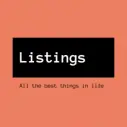On-page SEO can be overwhelming since it is the easiest. If you have read my previous blog post then you already know that SEO is done in two ways, on-page, and off-page. What is the meaning of on page SEO? This is the optimization done mostly on the webpage. Contrary Off-page SEO is the opposite where optimization using external links and other signals. To get search engine traffic you must apply tactics such as Meta tags and keyword density. The algorithms of on-page SEO are changing often so it is important to use the latest techniques in order to rank higher.
On-page SEO Techniques
These are the most popular on-page techniques:
1. Quality Content
Quality content refers to content that is useful, unbiased, original, one with text, and lastly well researched.
The main purpose of SEO is to direct quality traffic to a content-rich website. A website with quality content alone can perform well and much better when SEO is applied. Conversely, a website with low-quality content will get low traffic without SEO. Additionally when the visitors land on a website with low-quality content then there is a higher chance that they will leave immediately to never return. A visitor can tell if a webpage is worth for the first 30 seconds by just screening it.
2. Meta Descriptions and Page titles
Search engines read the title of a webpage first to determine the relevance of the content. Optimizing a webpage title should be the first priority. Every page should have a unique title that explains what the content in that page is all about.
Title
Starting the title with a keyword is very important to boost your SEO score. Search Engines love webpages with keywords closer or at the beginning. In addition, your title should be wrapped under a <h1> tag. Lastly, use SEO friendly URLs. For example seopoint.co.ke/on-page-SEO rather than complicated URLs such as seopoint.co.ke/2/3/2019/p=129/on-page-seo.html.
Meta descriptions
This refers to a snippet of 150- 200 words summarizing and describing the contents of a webpage. Further, the Meta description is fundamental because it is shown on the search results to attract the attention of readers. In addition, Metadata description purpose is to increase CTR (Click through Rate). Search Engine Algorithms will find websites with high CTR more relevant to users hence give them a higher ranking. A good Meta description should include the focus keyword, call to action and it should be written in active voice.
3. Visual Graphics
Visual graphics such as images, tables, and graphs reduce bounce rate and increase interaction on a web page. However, these graphics should be original, attractive and related to the contents.
4. Use < H2> tags in the subheadings.
Using subheadings in articles shows that you understand or experienced in what you are talking about.
It is important to include the keyword in the subheadings.
5. Site Speed
Search Engine Algorithms prioritize websites with fast loading speeds. This means that webpages with fast loading speeds rank better compared to slow webpages. A webpage should take less than 6 seconds to load completely.
Check Your Website load speed here
You can make a web page faster by using these tips.
- Invest in premium hosting. Most Cheap and free hosts take long compared to premium hosts such as Blue host and Hostgator.
- Use Cache plugins and CDNs
- Compressing Images
- Do not put a lot of ads on the websites.
6. Publish Long Content
Posting long posts will help you rank higher for the target keyword. In addition, long posts carry the advantage of bringing long tail keywords along.
7. Optimizing Images
Always make sure that images contain your focus keyword for example (keyword.png). Additionally, remember to include the Keyword in ALT Text and in the description too.
8. Inbound Linking
Use 2-3 links to older related articles when publishing a new one.
9. Outbound linking.
To get more traffic you must link your articles to more authority websites (White Hat Strategy). For every 1000 words link only 2-4 links to avoid getting penalized by the Google Panda. Using many external links is Black Hat Strategy which can cause you a lot of trouble with the search engines.
10. Use the Focus Keyword in the first 100 words.
Cut your story short and use the keyword at the beginning of your posts. Some writers start with long tales trying to introduce the keyword which is okay but not good for SEO. Using the Keyword in the first 100 words shows the search engines what you are writing about.
11. Mobile friendly and responsive designs.
Always make sure that your webpage design is user and mobile friendly otherwise it will be penalized by the search engine algorithms. Having responsive web designs is an added advantage for your ranking.
12. Increase dwell time on your website.
When visitors exit a website immediately they get in, sends signals that the quality of the content is low or irrelevant. This can cause your rankings to drop. You can increase your visitors dwell time by:
- Writing quality and long posts
- Encourage blog comments.- Always reply to many comments as possible since it improves your authority and rankings too.


good content Amos Gikunda been feeding people
Thank you for the compliment Stev.
Thank you very much, mas.
I am also learning optimization for my website.
You are welcome